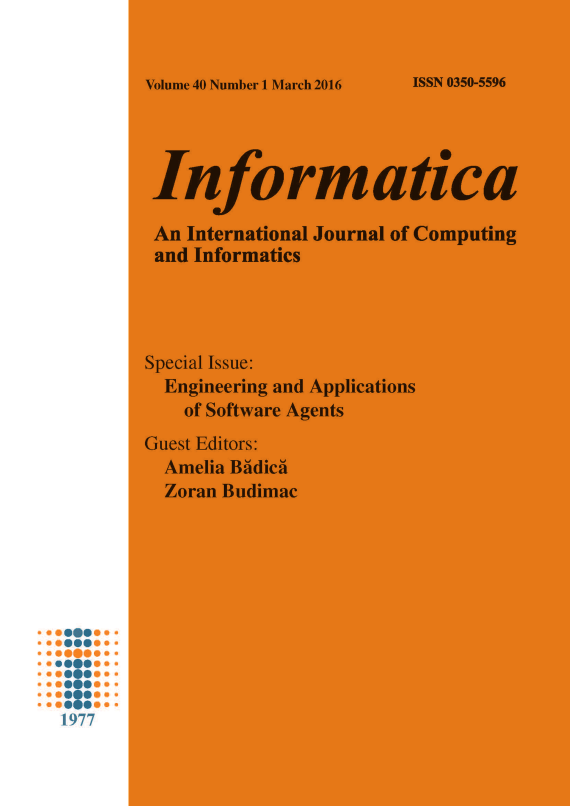Drupal 8 Modules: Translation Management Tool and Paragraphs
Abstract
As the Web has grown in the last few decades, we now have nearly one billion websites online and most of them offer rich information, that is usually diffcult to manage by normal users. In order to simplify the process of creating and managing website content with relative ease and with an user friendly experience, lots of content management systems were developed. These are software applications that provide capabilities for multiple users with di erent permission levels to seamlessly create, edit, review and publish website content. They offer a web-based graphical user interface, enabling publishers to access the content management systems online using only a web browser. Because of good security, quality, customisability and great support by the community of developers, open source content management systems are becoming extremely popular and many of them available on the market. The most noticeable are Drupal, Joomla, Magento and Wordpress. A lot of di erent surveys have been done to determine which one of them is the best, but this question still remained unanswered. Because of our personal involvement into developing Drupal and helping the community, this article describes a totally new version of Drupal, named Drupal 8. Firstly, a short overview about Drupal and all its key parts is presented, followed by a chapter describing all the new features and the current status. Two subtopics of this article will include modules that we lately contributed to { Translation Management Tool and Paragraphs. Some of our main issues are described at the end of each module.References
bibitem{4}
D. Buytaert (2010), The State of Drupal, textit{DrupalCon San Francisco}, url{http://sf2010.drupal.org/conference/sessions/state-drupal.html}, accessed July 2, 2015.
bibitem{1}
A. Byron, A. Berry, B. De Bont (2012) textit{Using Drupal - Choosing and Configuring Modules to Build Dynamic Website}, 2nd ed., O'Reilly Media, CA, USA.
bibitem{2}
A. Byron, Drupal 8 Preview Slideshow, url{https://github.com/webchick}, accessed July 2, 2015.
bibitem{3}
A. Byron (2012), What’s Planned for Drupal 8, textit{Drupal Watchdog}, url{https://drupalwatchdog.com/volume-2/issue-2/whats-planned-drupal-8}, accessed July 2, 2015.
bibitem{8}
K. Coombs (2009) Drupal Done Right, textit{Library Journal}, vol. 34, no. 19, pp. 30--32.
bibitem{6}
Driesnote Keynote (2015), textit{DrupalCon Los Angeles}, url{https://www.youtube.com/watch?v=uNRtZDAS0xI}, accessed July 2 2015.
bibitem{5}
Drupal webpage, url{https://www.drupal.org/}, accessed July 2 2015.
bibitem{10}
Drupal~8 webpage, url{https://www.drupal.org/drupal-8.0/}, accessed September 10, 2015.
bibitem{7}
Gengo, url{http://gengo.com/}, accessed September 2, 2015.
bibitem{11}
Paragraphs module, url{https://www.drupal.org/project/paragraphs}, accessed September 10, 2015.
bibitem{12}
S. K. Patel, V. R. Rathod, J. B. Prajapati (2011) Perforance Analysis of Content Management Systems - Joomla, Drupal and Wordpress,
textit{International Journal of Computer Applications}, vol. 21, no. 4, pp. 39--43.
bibitem{9}
T. Tomlinson (2010) textit{Pro Drupal 7 Development}, 3rd ed., Apress Bereley, CA, USA.
bibitem{13}
Translation Management Tool (TMGTM) module, url{https://www.drupal.org/project/tmgmt}, accessed September 10, 2015.
Downloads
Published
How to Cite
Issue
Section
License
I assign to Informatica, An International Journal of Computing and Informatics ("Journal") the copyright in the manuscript identified above and any additional material (figures, tables, illustrations, software or other information intended for publication) submitted as part of or as a supplement to the manuscript ("Paper") in all forms and media throughout the world, in all languages, for the full term of copyright, effective when and if the article is accepted for publication. This transfer includes the right to reproduce and/or to distribute the Paper to other journals or digital libraries in electronic and online forms and systems.
I understand that I retain the rights to use the pre-prints, off-prints, accepted manuscript and published journal Paper for personal use, scholarly purposes and internal institutional use.
In certain cases, I can ask for retaining the publishing rights of the Paper. The Journal can permit or deny the request for publishing rights, to which I fully agree.
I declare that the submitted Paper is original, has been written by the stated authors and has not been published elsewhere nor is currently being considered for publication by any other journal and will not be submitted for such review while under review by this Journal. The Paper contains no material that violates proprietary rights of any other person or entity. I have obtained written permission from copyright owners for any excerpts from copyrighted works that are included and have credited the sources in my article. I have informed the co-author(s) of the terms of this publishing agreement.
Copyright © Slovenian Society Informatika









